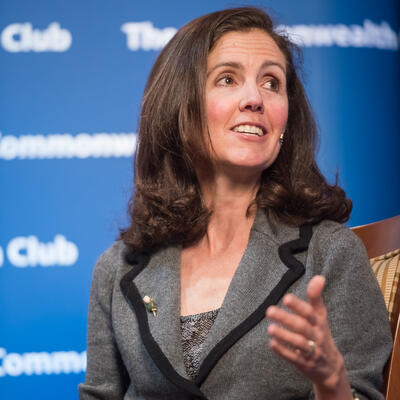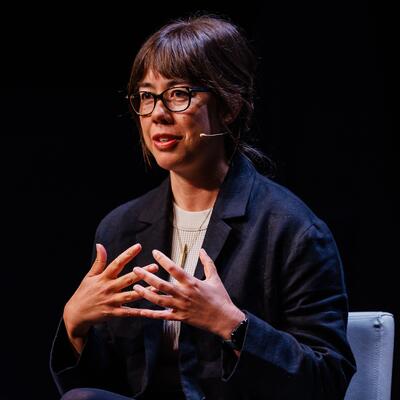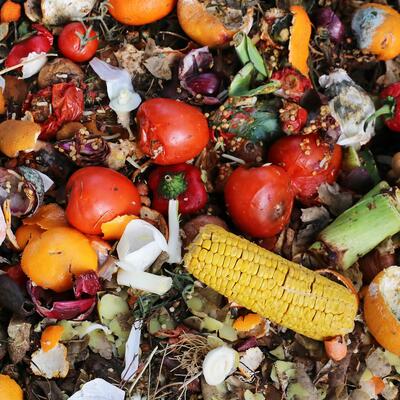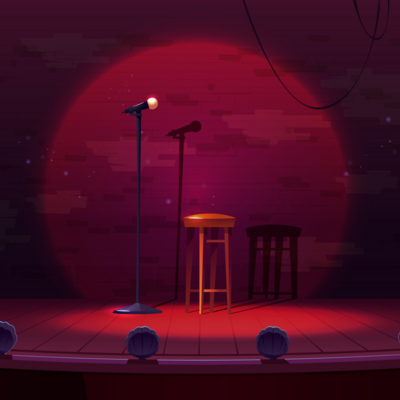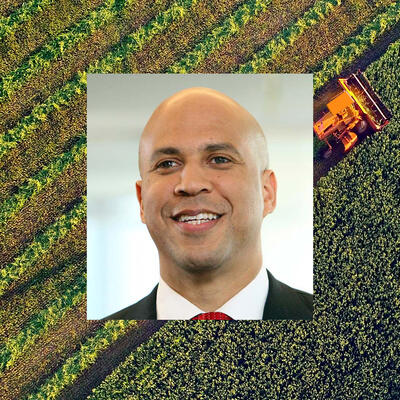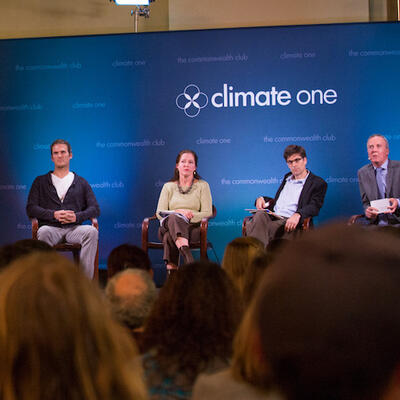
Cowspiracy
Guests
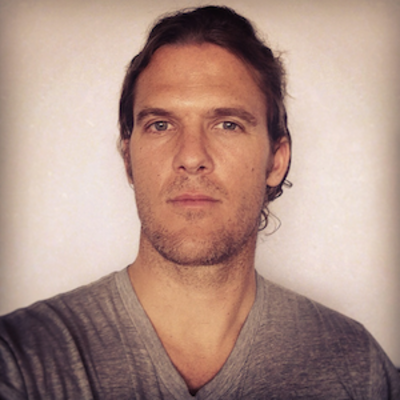
Kip Andersen
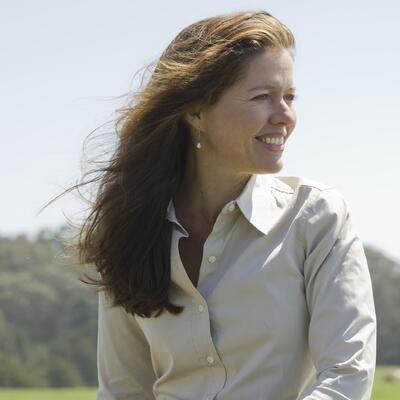
Nicolette Hahn Niman
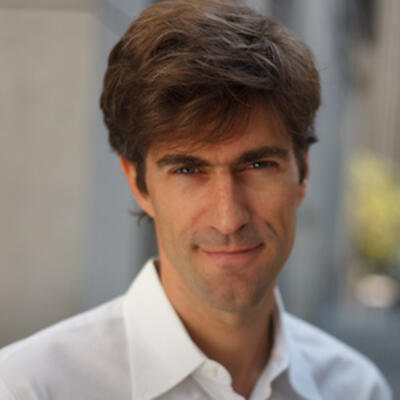
Jonathan Kaplan
Summary
In the quest for a carbon-neutral lifestyle, it can be difficult to sort out which activities have the greatest negative impact on our climate, from driving a car to eating animal products. The documentary Cowspiracy, produced by Leonardo DiCaprio, contends that animal agriculture is the number one source of climate killing pollution, and environmental non-profits are colluding to keep this information from the American public.
Kip Andersen, Founder, AUM Films and Media
Nicolette Hahn Niman, Author, Defending Beef
Jonathan Kaplan, Director, Food and Agriculture Program, Natural Resources Defense Council
This program was recorded in front of a live audience at the Commonwealth Club of California on April 12, 2016
Full Transcript
Greg Dalton: This is Climate One, I'm Greg Dalton and I have a question for you. What contributes more your carbon footprint? The car you drive or the food on your kitchen table? That’s a matter of lively debate and we’re going to sink our teeth into that on the show today. Let’s start at the top. The biggest source of global emissions comes from powering buildings of all sorts about 30%, according to the US EPA. Our cars and our stomachs are next, it’s somewhere about 15 to 20%. The answer for you personally of course depends on how you roll and how you dine. Whether you drive a scooter, an electric car or a gas guzzling SUV. Your food footprint also depends on how much meat and dairy you stock in your refrigerator. The documentary Cowspiracy contends that animal agriculture is the number one source of climate killing pollution. The film, which was executive produced by Leonardo DiCaprio released on Netflix last year. Essentially says humanity is toast unless we go vegan.
The notion of a sustainable meat production is a sham the film's claims. Over the next hour we’ll discuss Cowspiracy and other questions about producing food in an era of climate disruption. Joining our live audience at the Commonwealth Club today we’re pleased to have three guests to debate good and bad beef and broader questions about sustainable eating. Kip Andersen is the co-director of Cowspiracy and founder of AUM films and media, a nonprofit focused on promoting thrivability, compassion and harmony for all life.
[Applause]
Nicolette Hahn Niman is a vegetarian who raises cattle north of San Francisco, a critic of industrial meat production. She wrote Righteous Porkchop: Finding a Life and Good Food Beyond Factory Farms, and Defending Beef: The Case for Sustainable Meat Production. Jonathan Kaplan is director of the Food and Agriculture Program -- I thought the Warriors game was -- alright, this is great. Jonathan Kaplan is director of the Food and Agricultural Program at the NRDC. He leads initiatives to reduce antibiotic use in the livestock industry and eliminate toxic chemicals from the food supply. Please welcome them to Climate One.
[Applause]
Nicolette Hahn Niman, let's begin in 2006, the Food and Agriculture Organization issues a seminal report called Livestock’s Long Shadow. Tell us about that report and what it said.
Nicolette Hahn Niman: So up until that point there wasn't a lot of talk about livestock as a major contributor to global warming. And in 2006, the Food and Agriculture Organization published the report, Livestock’s Long Shadow which basically said it was all livestock together contributed about 18% of total global warming gases globally.
Now the figure looked at a lot of issues. In Defending Beef I argue that a lot of the figures should not have been included in that 18% because, for example, about 38% of that total 18% was actually from land-use changes. So it wasn't actually directly related to livestock raising; it was primarily deforestation in Brazil, Indonesia and Sudan. And there were other issues, but it was a pivotal moment in this discussion because the media really got a hold of that idea. And in their headline in their press release they said that livestock actually caused more global warming emissions than auto, than transportation. And they later acknowledged that that was actually incorrect, but in their initial press release they said that.
Greg Dalton: There's a group called Consultative Group on International Agricultural Research, it’s a research consortium of universities. They did a study that included fertilizer, storage and packaging and that group of research scientists says that food production, storage, fertilizer, packaging amounts to a third of global greenhouse gas emissions so -- ?
Nicolette Hahn Niman: Obviously there are lots of different numbers it depends on how you calculate it and what you include and what you attribute to what. But the current number for the United States according to the Environmental Protection Agency for all agriculture, so again that’s agriculture that doesn’t include all of the aspects of food production and storage and so forth -- but they say agriculture is 9% total and all ruminants are about a quarter of that. So it's about two and a half percent for the United States. And the international intergovernmental panel on climate change said that all agriculture is somewhere between 10% and 15%. So the numbers are a lot smaller than, those are the generally accepted numbers, those are the official numbers. There are all kinds of other numbers coming from various sectors.
Greg Dalton: Before we -- we’ll get into this; we’re not gonna debate percentages all night I guarantee you. But I do want to get a baseline here, let's, Adam roll clip one we’re gonna show you some of Cowspiracy and then have Kip and Jonathan respond.
[Video Playback]
Kip Andersen: I thought I was doing everything I could to help the planet. But then with one friend's post, everything changed. The post send me to a report online published by the United Nations, stating that raising livestock produces more greenhouse gases than the emissions of the entire transportation sector. This means that the meat and dairy industry produces more greenhouse gases than the exhaust of all cars, trucks, trains, boats, planes combined. Cows and other farm animals produce a substantial amount of methane from their digestive process. Methane gas from livestock is 86 times more destructive than carbon dioxide from vehicles.
Here I’d been riding my bike everywhere to help reduce emissions. But it turns out there's more to climate change than just fossil fuels. I started doing more research. The UN along with other agencies reported that not only did livestock play a major role in global warming, it is also the leading cause of resource consumption and environmental degradation, destroying the planet today.
Greg Dalton: Kip Andersen, let’s have your comment. That mentions the report --
Kip Andersen: Well then what you see later in the film is actually the number is closer to 51%, according to the World Bank, a study done by the World Bank. And that was actually the only study that has been done --
Nicolette Hahn Niman: Worldwatch. Worldwatch.
Kip Andersen: Worldwatch. It’s the only study that's been done that was calculated using the greenhouse gas protocol, which is a global standard for calculating greenhouse gases, which is the protocol, which is the standard recognized by all around the world of people who have now ventured into specific industries, where it takes everything in consideration. It does take the loss of rain forest into consideration, what would happen if you were allowed to have these forests grow back, the lungs grow back, and they had taken everything the complete cycle of raising livestock for food.
And so whether it’s 51% or 18%, you know, is debatable, but part of it is theoretical because no one really knows, does know but if we gave a chance for the planet to grow back the native forest lands, we could actually have a chance to really see a huge difference.
Greg Dalton: Jonathan Kaplan, It's big, whatever the number is, it’s big and animal agriculture has a big impact on the planet.
Jonathan Kaplan: I think that's the bottom line for your listeners. Livestock industry is big when it comes to carbon, when it comes to greenhouse gas emissions. I do wonder about the study that says it's 51%; I don't, you know, I’m not convinced it's the biggest. When you look at the United Nations Food and Agriculture Organization, EPA, the Intergovernmental Panel on Climate Change, all those agencies put the number more like, you know, 14%, 15% but that's still a really big number. So, you know, I don’t want to like that’s that under the rug and I think most Americans probably don't realize that the numbers as big as it is.
Greg Dalton: Let's go to a second clip, there’s another part of this film Cowspiracy, we’re talking about today, at Climate One. So let’s roll clip number two, which is about how the environmental groups responded to this.
[Video Playback]
Kip Andersen: How was it possible I wasn't aware of this? I thought this information would be plastered everywhere in the environmental community. I went to the nation's largest environmental organizations websites 350.org, Greenpeace, Sierra Club, Climate Reality, Rainforest Action Network, Amazon Watch and was shocked to see they had virtually nothing on animal agriculture. What was going on, why wouldn’t they have this information on their main page? It seemed the main focus for many of these groups was natural gas and oil production with fracking being the latest hot issue due to water usage and contamination.
Hydraulic fracturing for natural gas use an incredible amount of water, a staggering 100 billion gallons of water is used every year in the United States. But when I compared this with animal agriculture, raising livestock just in the US consumes 34 trillion gallons of water and it turns out the methane emissions from both industries are nearly equal.
Greg Dalton: Jonathan Kaplan, is there an environmental, he didn’t mention NRDC, which is where you work.
Jonathan Kaplan: Yeah, right. So, there’s no conspiracy, let me just say that now, you know. The film alleges which I think is absurd that, you know, somehow NRDC and other green groups are taking money, perhaps from the livestock industry to hide, to cover up the impact of this industry, which, you know, is pretty upsetting as an allegation and completely without merit. And in fact, NRDC and probably lots of the other groups discussed in the film have done a huge amount of work over the years, challenging the livestock industry challenging their pollution, their overuse of antibiotics, the fact that they, you know, confined feedlots are basically huge cities worth of manure that are completely untreated and are despoiling rivers and creeks and really destroying communities where they’re located.
So I wanted just get that out of the way, you know, as you said earlier, we do have a lot to agree on here. We do need to reduce our meat consumption and we need to help this industry, force this industry to clean up its act. I don't think it's good enough to say, you know, let's all just stop eating meat and hope everybody agrees and that's gonna be our strategy. That's not gonna be a winning strategy that’s gonna be part of the solution, but we also have to be there holding this industry accountable and encouraging entrepreneurs to have a more sustainable way to raise animals. That is a really important part of the story and we have to celebrate them.
Greg Dalton: Kip Andersen, your response to the suggestion that environmental groups do a lot on farming and cattle grazing and deforestation et cetera. That you overlooked that and painted a simplistic, kind of a conspiratorial thesis on your film?
Jonathan Kaplan: Before we go to Kip, can I just jump one more. To follow up to what I just said, there’s one other really important point in the story, which is that the environmental groups including NRDC and Sierra Club and others profiled in this film are mostly working here in the United States. Where, you know, as Nicolette said that the greenhouse gas impact from the livestock industry is relatively small. It's only probably 3% or 4%, right. Transportation and power generation is two thirds of the American carbon footprint. That's the big source and that's where you see the vast majority, the resources from these organizations going. And by the way, we've had incredible progress there. We have doubled the fuel efficiency of the American fleet, vehicle fleet and with the new president’s clean carbon power plan we are on track to slash emissions 30% from that sector by 2030. So that is a really big win and we’re very proud of that work.
Greg Dalton: Kip Andersen, on the selection of data in the conspiracy thesis. Your response?
Kip Andersen: So, raising animals for food, animal culture, specifically say for Natural Resources Defense Council is, you know, protecting natural resources. This one industry is a one-stop shop for if not, the number one leading number one or number two leading cause of deforestation, water consumption, water depletion, ocean dead zones. We’ve already admitted and it’s somewhere up there of greenhouse gases, wildlife killing, the list goes on and on. A one-stop shop and you go on these environmental groups websites, and you see this tucked away, tucked away deep, deep, deep in these organizations websites. You can’t even see it. It needs to be on the forefront attention newsflash, we just found out this one industry is destroying our entire planet on one single issue. And the definition of a conspiracy is a group of people gathering together of doing something harmful. And when this industry knows and I know NRDC knows, I know they’ve seen our film and I know Greenpeace knows and the Rainforest Action Network, they know this information and they are not telling it to the public.
And we discussed, you know, when we were in the green room said that it's not -- again it’s such a big word, a win, a win, that the word win is used so many times a win program or a win thing to tell people. And what a win campaign, sorry win campaign means is if it will gather more donors and more money to their nonprofit. But when the reality is all we have to do is not tell people to stop eating meat and dairy, it's just tell them the information that this is what is being caused. And that's not being done so that's very harmful to the planet.
Greg Dalton: So what I think that they do there -- say is that they underemphasized it, that they don't emphasize it enough and it's harmful and they don't emphasize it enough and it's partly because of their business model, that they don't touch these issues.
Kip Andersen: Imagine the Lung Cancer Defense Council, LCDC and you go on their website and there, you know, the headline is, you know, stay away from asbestos and don't put your mouth in front of exhaust, this is the best way not to get lung cancer and they don't mention hardly anywhere about tobacco smoking. And I mean that’s equivalent of going on at these environmental groups and I do give credit to NRDC that they actually do mention it, whereas Greenpeace you have to dig deep and where we do a fun challenge to people see if you can find this without typing on the search engine, see if you can find somewhere about raising animals for food was just how it destroying the planet.
Greg Dalton: Nicolette Hahn Niman, I received an email today from Anna Lappe, who’s the author of Diet for a Hot Planet: The Climate Crisis at the End of Your Fork. And she wrote that environmentalists were silent for quite a while on food. They had a blind spot not because of a conspiracy, but she admits they had a blind spot. She says the film is ridiculous. The conspiracy claim is ridiculous and it’s dangerously misleading, but enviros were late to the food game. They were behind the curve on this.
Nicolette Hahn Niman: Well, there is an aspect of truth to that, but in 2000 I was charged by Robert F. Kennedy Junior, I was a senior attorney for the environmental group Waterkeeper Alliance specifically to work on environmental problems related to livestock industry, that’s back in 2000. And we worked with all of the major environmental groups in the United States and I led that campaign for two years before leaving that job. But that was the beginning of a lot of environmental groups working, focusing on the environment impact from livestock production.
But I think the whole problem with the premise of the film and observe a lot of the discussion that’s been had already is that livestock is inherently problematic when in fact that's absolutely not true at all. Because it's really about how it's done. And if it's done poorly, it can have a negative environmental impact, if it’s done well it's actually an essential part of sustainable food production. And having now worked on this issue for the last 15 years I would say I think that there are three keys to sustainable food production, and those are water, soil and microbiology. And in each of those three categories livestock plays an essential role. They play an essential role in optimal soil in building soil fertility and in the soil health and especially the microbiology of the soil and in the whole hydrological system of our world, and of our world food system. And there's a lot that's been written about this I think this is actually the core of where the sustainable food movement needs to go and this is totally ignored in the suggestion that we need to be moving towards veganism. So when you get rid of animals, you’re actually throwing the baby out with the bathwater because they’re an essential part of sustainable food production.
[Applause]
Greg Dalton: We’re gonna get into free range food and other topics. We’re talking about Cowspiracy at Climate One. You can join the conversation using our twitter handle @climateone. We’re gonna roll our third clip from Cowspiracy. And this is Michael Pollan talking about the business model of environmental groups.
[Video Playback]
Michael Pollan: I think they think it’s -- I think they focus grouped it and that’s a political loser. In terms of -- yeah, because they’re membership organizations, you know, a lot of them. They're looking to maximize the number of people making contributions and if they get identified as being anti-meat or challenging people on their everyday habits that’s something so dear to people that it will hurt with their fundraising.
Greg Dalton: Jonathan Kaplan, strong words from a very respected food guru saying that groups like NRDC don't want to be food nags, is he right?
Jonathan Kaplan: First of all I am very unhappy with the suggestion that we’re sort of profit, you know, motivated. People at NRDC could be making a lot more money working for some private company somewhere. So we’re not doing this to raise money. We are a membership organization and we are a policy change organization. To change policy in this country, you need members, you need to have a large group of people behind you, and we do. We have 1.3 million members and online advocates behind our work and that allows us to be persuasive in the halls of Congress or with regulators and so on. So yes, we do have to make sure that our messages are inclusive and we don't think it's necessarily a good strategy to be out there with a message telling people that they are the problem. Now, does that mean we should be silent about it, no. We need to give people the facts as Kip said, we need to let people understand that their food choices matter, they matter a lot. And we need to encourage people to take steps to, you know, move down the spectrum toward a more sustainable diet. But we don't think it's necessarily the best strategy to come out of the gate and tell everybody that they have to go to zero animal products consumption today.
Nicolette Hahn Niman: And it's really important to note that Michael Pollan is in fact an omnivore and has repeatedly written and spoken about the importance of livestock in the food system, in getting towards a more sustainable food system. So when we’re talking about Michael Pollan it's really important to note he’s not a vegan and he doesn't believe in veganism as the solution for food system problems.
Greg Dalton: He thinks we’re just eating too much. Kip Andersen.
Kip Andersen: In our film, Michael Pollan says himself that if -- and this is a big part of the film; what a lot of people think of in terms of sustainability is more of privilegeable. It can feed a certain amount of people the top 1% to make themselves feel good about eating “sustainable grass fed beef” where an inner-city youth or poor urban areas can’t come close to that. But Michael Pollan, on a global level when we asked him what is the most sustainable amount of meat and dairy not even meat or dairy meat and there he said 2 ounces per week. This is grass fed beef's guru and even he is admitting how impactful with 7 billion people, not 1 billion, one and a half billion which was 100 years ago, this discussion would make sense. But now we’re 7 billion people, we don't have enough land.
Nicolette Hahn Niman: He also said that you guys edited his interview in such a way that it was very unrepresentative of his full remarks.
Kip Andersen: He said exactly that.
Nicolette Hahn Niman: Which is true of a lot of people that are in the film and I’ve talked to several of them directly. In addition to that, it’s important to note that about a billion of the world's poorest people are entirely dependent on livestock. So when you act as though this is some rich people that are just privileged few that get to eat well raised meat that's an absurdity.
[Applause]
Kip Andersen: We’re talking, you know, it gets brought back a lot of times but what about, you know, this aboriginal group or some tribe in South America.
For the majority of people for majority of people even watching this film of this discussion, we're not talking about these people. We’re talking about everyone, the normal person eating grass-fed beef feeding America on grass-fed beef -- and these numbers that we came up with about land use. This was from the Markegard grass-fed beef --
Nicolette Hahn Niman: And actually the Markegards are here tonight. So I think they’re gonna have some things that they wanna say.
Kip Andersen: And I love -- they’re an incredible family and --
Nicolette Hahn Niman: They sure are.
Kip Andersen: They are, they’re amazing. We came up with the numbers from their calculations with what they told us. We came on the low-end it comes down to land use with 7 billion people when you have 1 acre and this is of lush area, beautiful area they live in. An ideal situation is one cow per 10 acres where they are. Imagine that you know where they have another ranch was around 50 acres for one cow. We did calculations based on that and if just to feed only the US population, it’s in our film, you’d have to destroy every single square inch up in the Canada all the way through Central America into South America to feed just the US consumption of which the grass-fed beef based on their calculations.
A lot of people think we came up with this information from the film. A lot of this is from the industry itself. The same thing happened with dairy. The CEO of Clover organic dairy, probably the most revered or one of the top two or three revered organic dairy farms in probably the entire world, the CEO says this is not sustainable. The farm that we went to, you know, the best farm that they could show us the farmer himself says this is absolutely not sustainable.
Nicolette Hahn Niman: He didn’t say this is not sustainable.
Kip Andersen: He says “if we have to feed people on dairies, the way dairy is going we’re gonna have to clear houses and clear entire towns” and he carried on with that.
Nicolette Hahn Niman: So what that saying is that maybe we need to do things in a different way or that maybe not the way things are done in one place can be replicated worldwide. That doesn’t mean he’s saying dairy is not sustainable. That’s what so absurd about the film, is it takes one idea and then it extracts it over the world.
And in fact the statistics in the film, which your statistics advisor Dr. Richard Oppenlander who’s a dentist, a vegan dentist from Portage, Michigan, he’s the guy who created the statistics that you keep citing. But in fact, none of the statistics in the film like about the land-use are accepted by -- first of all they weren’t generated by any legitimate people who know anything about this topic -- but none of them are accepted. They’re talking about their ranch you can’t extrapolate that.
Kip Andersen: It’s one of the most lush, they live on Monterey Peninsula.
Nicolette Hahn Niman: It has nothing to do with the world food system. That’s what so absurd about the statistics in your film is you take back of the envelope calculation and then you have a dentist from Kalamazoo, Michigan recalculate that for the world food system. And that’s the basis of your statistics and so many of your statements. That is what is so absurd about this film. It is made by people who do not understand anything about sustainability. The word soil, which is actually the foundation of sustainable food production, is almost entirely absent from the film and when you talk to something like Gabe Brown who’s a farmer in North Dakota, who has become sort of a model of sustainable food production, the world over, he says you absolutely have to have animals, have healthy soils and to build the microbiology of the soils. Yet, none of this is explained in your film because frankly you don't understand it.
[Applause]
Greg Dalton: We’re talking about the film Cowspiracy at Climate One with Nicolette Hahn Niman, Kip Andersen, the co-director of the film. I want to ask Jonathan Kaplan from NRDC to comment on this point that grass-fed animal agriculture does not scale. It’s limited to be something just for Berkeley, Boulder, Boston; that it's not something that can feed the heartland of America because it takes too much land.
Jonathan Kaplan: Well first of all, if you drive by an industrial feedlot or park your car out in front of one for five minutes you’re gonna be pretty motivated to figure out how to make pasture-based cows work, right. I mean it’s, you know, this idea that it's either, you know, we should go to zero meat or accept the existing system is a false dichotomy. We definitely have to reduce our meat consumption. I tend to believe that we cannot have all the cows that are in the country today on pasture, but that doesn't mean we should have zero. And I think the challenge is to get as many animals as we can out of these massive industrial feedlots and ratchet down our demand for meat and produce the cows that we are going to eat in a much more sustainable way and that's mostly gonna be a pasture-based system.
Now I’ll also say that just putting the cows on grass is not gonna solve our problems because guess what, we have severe overgrazing on half or more of all the rangeland in this country today. And when you have overgrazed land, you’ve got invasive species being introduced, you’re gonna be losing soil, you’re gonna be losing carbon dioxide as result of all that. So we have to also incentivize more sustainable or better managed grazing that's more based on grass productivity and that's gonna produce the animals, you know, faster and in a more healthy and economically viable way as well.
Greg Dalton: We’re gonna go to our lighting round which we ask each of the guests today to answer a brief yes or no question. Starting with Jonathan Kaplan, the issue environmentalists really don’t want to touch with a ten-foot pole is human population, yes or no?
Jonathan Kaplan: Wow, ambush.
[Laughter]
I think that question is above my or below my pay grade, above my pay grade.
You know what --
Greg Dalton: It’s all right, we’re doing yes or no. So you can punt on that one. Kip Andersen, most people in developing countries would continue to eat animal protein even if they were aware of negative impacts on the earth’s climate, yes or no?
Kip Andersen: I totally agree. Yes, it’s extremely addictive.
Greg Dalton: Nicolette Hahn Niman, eating a hamburger which in America or just about everywhere else is probably made with industrial meat is one of the most damaging things a person can do to the earth’s climate, yes or no?
Nicolette Hahn Niman: Absolutely not true.
Greg Dalton: Jonathan Kaplan. NRDC accepts donations from companies in the agriculture and food industries, yes or no?
Jonathan Kaplan: No.
Greg Dalton: Kip Andersen, in making Cowspiracy you modeled facts to your vegan thesis rather than going with the data and story led you, yes or no?
Kip Andersen: Absolutely not.
Greg Dalton: Nicolette Hahn Niman, the grazing practice is you advocate for keeping water and carbon in the soil are too complicated for most ranchers?
Nicolette Hahn Niman: Definitely not true. I mean you just have to look at somebody like Gabe Brown and he’s not a soil scientist and he’s showing the world how this can be done on basically any farm or ranch.
Greg Dalton: Jonathan Kaplan, NRDC contributes to deforestation by mailing paper solicitations and other materials to a 2.4 million members and activists, yes or no?
Jonathan Kaplan: What time does the show end?
[Laughter]
Again, yes there’s an impact to that but we are a grassroots membership based organization. And that still is a really important way to build our membership and build our power. So, and we also fly our staff to meetings around the country that has a huge carbon impact. We run our computers and so on. So we are, we do the best we can but there are environmental causes too.
Greg Dalton: Kip Andersen, managed carefully, livestock can be part of the balance ecosystem that serves humans and nature?
Kip Andersen: Hundred years ago maybe; now with 7 billion people absolutely not.
[Applause]
Greg Dalton: Jonathan Kaplan, Cowspiracy exaggerates the carbon pollution coming from animal agriculture, yes or no?
Jonathan Kaplan: I think so.
Greg Dalton: Last one, Nicolette Hahn Niman, some environmentalists are preachy and righteous?
Nicolette Hahn Niman: Yes.
Greg Dalton: Anyone sitting here on the stage today that fits that description?
Kip Andersen: Be careful.
[Laughter]
Nicolette Hahn Niman: There are people who think that they’re environmentalists that are preachy and self-righteous, for sure.
Greg Dalton: Alright. That ends our lighting round. How did they do? I think they did pretty well. Let’s give them a round for it.
[Applause]
[Climate One Minute]
Announcer: And now, here’s a Climate One Minute.
Agriculture, including meat production, is a big part of the worldwide climate change puzzle. But at the Paris Climate Summit last December, it wasn’t high on the list of topics for negotiators. Frank Rijsberman, CEO of the Consortium of International Agricultural Researchers, says that’s because it’s hard to reach consensus among countries with such disparate needs.
Rijsberman: There’s a big divide between the people that come from CA or the US who want to talk about mitigation in agriculture and the countries like India and many of the other developing countries who say look we didn’t do this, we are being impacted. Small scale agricultures, poor small holders, are among the most vulnerable to be impacted by climate change, so they don’t want to mitigate, they want help with adaptation; therefore indeed we have to find win-win solutions to bring people to the table.
Indeed if you eat a hamburger in California, if you eat meat that was raised with corn then you have a very different part in the whole climate puzzle than if you are eating a much smaller piece of meat from a cow that was grass fed in the rangelands of Ethiopia. So we have a very different background and perspectives as to what the issues are.
It’s true that we have food systems that are very unsustainable, for lots of reasons. We use too much energy, we use too much water, we degrade the land and yes, agriculture is the big contributor worldwide. Agrifood systems produce as much as a quarter of all greenhouse gases, and livestock can be roughly half that. So yes, we believe that agriculture can become part of the solution but it will have to be done in a way that is a solution for both adaptation and mitigation.
Announcer: Frank Rijsberman of CGIAR spoke with Greg Dalton at the Global Landscapes Forum last December. Now, back to our live program at The Commonwealth Club.
[End Climate One Minute]
Greg Dalton: We’re talking at Climate One about the film Cowspiracy. I’m Greg Dalton. My guests are Nicolette Hahn Niman a vegetarian rancher in Marin. Jonathan Kaplan from the Natural Resources Defense Council and Kip Andersen co-producer co-director of the film Cowspiracy.
Let's talk about aquaculture. Kip Andersen a lot of people think that, well first of all there’s about 2% or 3% vegetarians in the United States. A lot of them go back to eating meat after some time. I've talked to a number of people say I'm a vegetarian but I eat fish, not that that makes the definition of vegetarian. But let's talk about aquaculture. We’ve been talking mainly about cows, animals on legs, let’s talk about fish.
Kip Andersen: Aquaculture is terribly destructive. Aquaculture, one of the biggest aquaculture farms in the world is in Sydney. I remembered going to a discussion there and I asked how much fish are your fish eating because fish eat fish to produce the food? And it is so incredibly inefficient, where most of our entire fisheries are completely depleted of fish in our oceans. You know as they say by 2040 we’re not gonna essentially have any fish in the oceans; you're extracting fish to feed other fish to grow vegetables when we can do organic farming and skip the middleman of fish and actually just grow the plants by themselves.
[Applause]
Greg Dalton: Jonathan Kaplan, shrimp farms, incredible environmental devastation. Where is NRDC on sustainable aquaculture? Can we grow fish protein in caged areas because we’ve basically fished out all the oceans?
Jonathan Kaplan: Greg, I’ve got bad news for you. You’ve got the land food guy on your panel here tonight. We have a whole oceans program and I know people who can answer that question. But, yeah we are obviously very concerned about the environmental impacts caused from aquaculture, you know, and the point that Kip made. One of the issues that I'm worried about there is antibiotic use. There's a lot of antibiotics used in aquaculture and that's, antibiotic resistance is now one of the largest threats facing this nation and the planet. Centers for Disease Control and Prevention has said that if trends continue, we are facing the potential loss of modern medicine as we know it. We’re not gonna have drugs to be able to do basic surgeries and chemotherapies and treat basic infections. And guess what - 70% of all the antibiotics sold in this country are sold for livestock use. So that's another big-ticket item that we have to solve. But I will also say that it's hard to tackle that problem if your message is just don't eat any meat at all. Because we have to persuade this industry to stop using their drugs today. And if you go at them and say, and by the way, we don't think you should exist at all, makes it a hard sell.
Greg Dalton: So how about Kip Andersen, it’s -- are you saying get rid of all the cows, don’t kill any cows? I get the sense you’re coming up from a humane perspective that killing animals is wrong that people, vegans there’s a moral issue underneath this, I get the sense; what is it really?
Kip Andersen: Well, what keeps getting brought up and just reminds you over and over and over and we’re doing a new film on health is the similarities between the animal culture in the sea and raising animals for food in the tobacco industry. The exact same thing is coming out right now that happened in the tobacco industry 20 years ago. It was covered up for so long and then all of a sudden the wave came of truth. And so, you know, about the antibiotics it's true. It's one of the biggest dangers of facing the entire planet; one outbreak could kill millions and millions. But to say again not to tell people not to smoke or not to eat meat we’re just asking them it's like asking Marlboro, let’s ask Marlboro to not put chemicals in their cigarettes. Why not just say, hey let’s stop smoking cigarettes? Let’s skip, we’re not babies we don’t need to do baby steps, we’re big adults.
[Applause]
Nicolette Hahn Niman: I think there’s a big problem with the suggestion that repeatedly that this is what’s motivating environmental advocacy, the fact that it's too hard to tell people not to do this. That optimally, that sort of Jonathan's comments are sort of suggesting that and I find that really troubling. Because as someone who’s been working on environmental issues for a long time and who majored in biology and work as an environmental lawyer, I can tell you that there is no evidence at all that the optimal food system from an ecological standpoint excludes animals entirely. And in fact there’s a great deal of evidence to the contrary, and I think the one piece of sort of written literature I really want people to look at is that a new study that was just published by Dr. Richard Teague and Dr. Rattan Lal who is one of the leading soil scientists in the world which is entitled The Role of Ruminants in Reducing Agriculture's Carbon Footprint in North America. This is a brand-new peer-reviewed study in the Journal of Soil and Water Conservation and they conclude that actually having more ruminants on the landscape in the United States would be a step forward from a climate change perspective. So this is not at all -- there is no factual or scientific basis for the claim that the optimal system excludes animals. It's just not true.
Greg Dalton: Jonathan Kaplan, can cows be part of the carbon solution?
Jonathan Kaplan: Yes, but we’ve got to have fewer cows. And I think there's a lot of evidence that shows when you have crop/livestock integrated farms you can close the loop on nitrogen. The farmer doesn't have to buy synthetic fertilizer to put on the crops that he can grow or she can grow the feed for the animals. It’s a much more sustainable system than the one we got now.
Nicolette Hahn Niman: Well, and the basis of this article which is written by a dozen very well respected scientists and researchers in this field, is that basically when you have the animal impact you have all kinds of benefits to the soil and especially in the soil microbiology. And that you actually can't have that absent those ruminants.
Greg Dalton: Kip Andersen, a lot of people switch from dairy to other sources of milk, almond milk; almonds use a tremendous amount of water. One thing I've learned in environmental inquiry the last 10 years is sometimes the solution is worse than the first thing. So how do you feel about people say okay no dairy but then we’re drinking almond milk and growing almonds in a drought in California?
Kip Andersen: Well, if you watched the film, to make 1 gallon of cow’s milk it takes upwards of 1000 gallons of water. There's absolutely no comparison when you compare that to soy milk, almond milk definitely takes a lot, you know, we don't recommend to anyone drinking almond milk every day. You can drink soy, you can drink cashew you can drink coconut milk and they’re incredibly more sustainable; not only more sustainable but the ethical choice as well. No splitting up of, you know, the mother-child relationship of the veal industry of, you know, eventually, when the cow after it finishes you see in our film, after it finishes producing milk and lost around five of her calves, then she's killed for hamburgers. It's all, you know, you remove all that and goes directly to the source where most of these big animals get their protein is directly from plants.
Nicolette Hahn Niman: So I think you can see that a lot of this is motivated by a desire not to kill animals and I think that's fine if a person wants to make that dietary choice.
Kip Andersen: And the planet.
Nicolette Hahn Niman: But it's really important to understand when ruminants are consuming water and you see those water footprint numbers 98% of the water that they’re consuming that is calculated those water footprint numbers is green water. In other words, it’s the water from a rainfall in the forages that they're consuming. So those water footprint numbers used in the film and that are commonly bandied about are totally meaningless when you’re talking about truly sustainable food production.
Kip Andersen: That’s absolutely true.
[00:48:10] Nicolette Hahn Niman: What matters is blue water which is the irrigation water, which by the way is a lot higher in almond milk production than it is in dairy production.
[Applause]
Greg Dalton: Nicolette Hahn Niman, some teenage kids went to the Mill Valley Film Festival and saw Cowspiracy. And that was upsetting to some parents. They’re very concerned -- I’d like to ask you how is that different than parents in red states who were upset when Al Gore's film was showed in schools?
Nicolette Hahn Niman: Well, there’s one thing to show different perspectives on an issue but there’s another thing to show totally inaccurate and misleading information as a documentary. I mean if you want to say we’re gonna show you a pro vegan film now, a vegan advocacy piece and show the film, I have no problem with that. But if you’re gonna say we’re gonna show you a documentary about ecology of the food system and then show Cowspiracy, that is totally wrong and very misleading. And especially to young people. They don't have the ability, they don’t see Richard Oppenlander in that film and know that that's a vegan dentist who has absolutely no credentials to be talking about overgrazing or overfishing or anything else that he talked about in the film. When you're 12 years old you can't make those kinds of discernments. I think it's fine if the film obviously is seen by people but it needs to be put in context and especially for younger people who don't have the ability to understand all of what's behind the film.
Greg Dalton: And I think that’s what parents felt about Al Gore's film too. Kip Andersen.
Kip Andersen: And I think what’s so important with this discussion especially with Nicolette and I. There’s only one truth here. There's not a kind of truth or partial truth or partial false there is one truth and time will tell and history will tell what is the truth.
And when you watch Cowspiracy in 10 years from now, and you watch as you watch Al Gore's film as it was now when it was controversy and you watch that now, the truth speaks and the truth lives on. You can only hide the truth in the sun for so long and we’ll see in 10 or 20 years where we don't have to debate, the truth speaks wonders and the truth’s best friend is this film.
Nicolette Hahn Niman: I know, I understand this is a religion for you.
Kip Andersen: This religion is called peace, compassion, and sustainability is my religion, yes.
Nicolette Hahn Niman: I understand that. And so therefore you’ve created a film that attempts to say that food system sustainability is dependent on not eating animals because you don't believe in eating animals, that’s fine --
Kip Andersen: For the planet, for my health and the future.
Nicolette Hahn Niman: -- that’s your religion that’s great. But don’t try to impose it on other people or pretend like this is actually sustainability.
Kip Andersen: The film just discusses, I never imposed any - I don’t say one thing, all we do is explore the truth and time will tell.
Nicolette Hahn Niman: You misrepresent facts, you misrepresent people, you use false information throughout the film from start to finish.
Kip Andersen: Time will show the truth.
Nicolette Hahn Niman: And that is -- the film is basically garbage. It’s complete garbage. And for you to sit there and to act like this is some gospel truth, I mean it’s ridiculous it’s absurd.
Greg Dalton: Alright, let’s -- Jonathan Kaplan.
Jonathan Kaplan: Everybody wants to be on the panel we should get everybody up here. You know, so obviously I’m sort of in between the positions that are being expressed here, but I do want to say --
Greg Dalton: Maybe you should sit over there.
Jonathan Kaplan: I think that the overall message of the film is one that Americans need to know better. The meat, you know, the food that you eat, the meat in particular, has a big impact on your personal carbon and environmental footprint as a general top line point I think that is a really important message for people to get out there. But again, when you talk about the truth and everlasting truth, the treatment of the environmental groups that appear in this film they didn't get the benefit of a truthful portrayal.
[Applause]
Nicolette Hahn Niman: And neither did any of the farmers.
Kip Andersen: This now two years removed from making the film of what we’ve uncovered about marketing, people spending a lot of money these environmental groups that we’ve seen marketing program, if telling people just the information of what meat and dairy is causing to the planet is this a win campaign or not and the conclusion was it’s not a win campaign. So therefore the environmental groups do not tell the truth about what meat and dairy does. If this is not the truth that is shown in the film, I don’t know what it is. And again, time will tell.
Jonathan Kaplan: There’s no evidence to that, in fact we do; here’s our factsheet from 2010, okay.
Kip Andersen: That’s six years ago.
Jonathan Kaplan: The number one rec -- yeah, it’s on our website today.
Kip Andersen: I couldn’t find it.
Jonathan Kaplan: The number one recommendation that we make is to eat less meat. We have, this is our eat green, our everyday food choices affect global warming and the environment it’s our guide for consumers who want to know how should I change my menu. The first thing we say is reduce your meat consumption.
Kip Andersen: That’s awesome.
Jonathan Kaplan: Alright. That’s been there for five years but nobody called me when you were making this film. You know, you asked to interview Annie Nothoff, who’s our California legislative director --
Kip Andersen: We actually asked for you.
Jonathan Kaplan: Well, you didn’t talk to me. I didn’t get an email or a phone call or whatever.
Kip Andersen: We did ask for you, but.
Jonathan Kaplan: So you asked to talk to somebody who doesn’t work directly on this issue. You didn’t tell her what the film was actually about. You didn’t tell her what your agenda was. You set her up to be bamboozled. And clearly you did that to other people in the film and I think that does a disservice to the people who are working really hard to try to solve the same problems that you want to solve. If you have a disagreement, the thing you do is be totally straight up about it and come to me, come to NRDC and say, hey, we’d like to see more messaging on your website about veganism or reducing meat consumption or can you help me find it. But that’s not what happened here. And I haven’t talked to anybody else in the other groups that you portrayed but watching the film, it sure looks like that’s exactly what you did to everybody.
Kip Andersen: The other part about the truth of the film that will --
Jonathan Kaplan: Just one more thing. And when you attack the environmental groups, we basically have a circular firing squad and we’re all weaker. And we are collectively up against really, really powerful opponents. I've been going, you know, cheek to jowl with those guys on antibiotics now for three years and it is tough. They have massive power political power, economic power, research power. They can bring in all the lobby firms they want and it sure doesn't help to get arrows in the back from our friends and allies.
[Applause]
Greg Dalton: Let’s let Kip Andersen respond to that and then we’re gonna --
Kip Andersen: I just want to say it’s so important that the incredible work that NRDC does and the Greenpeace and the Amazon Watch, these certain subjects they touch; fracking, you know, of different issues with water and oil and fossil fuels compared to animal agriculture is so monumental that the analogy use with is there's a house that is burning there's a giant bonfire in the middle of the house that is burning, destroying the house. And it is so by far more than anything else and you have some of these groups or some people coming in and, you know, washing the windows, or fixing a little leaky faucet. Meanwhile, there's a bonfire in the middle of the house burning the house down destroying the planet, and this is not being talked about as the forefront -- not number one number two, not even the top three. This needs to be the number one or number two. And the silence is destroying the planet, you know, silence is the deadliest weapon. And these environmental groups as time will tell in 10 years from now, you’re gonna look back and say that the environmental groups were absolutely failing us and it's a tragedy.
[Applause]
[00:55:45] Greg Dalton: Alright. We are talking about the film Cowspiracy at Climate One. That is Kip Andersen, co-director of the film. Other guests here today are Nicolette Hahn Niman, a rancher in Marin and Jonathan Kaplan from NRDC. I’m Greg Dalton. You can join the conversation on Twitter using our handle @climateone.
Greg Dalton: Let’s go to audience questions, welcome to Climate One.
Female Participant: My name is Leila Salazar-Lopez. I’m the executive director of Amazon Watch. And some of you might have seen me in the film Cowspiracy. So I was actually in the film, I didn’t know it was a film about animal agriculture. I thought it was a film about sustainability when I was interviewed. So I was pretty shocked and disappointed actually Kip when I saw the film. Because, not because of the issue of we need to get animal ag, you know, in the forefront of the environmental and climate debate. I agree with you, it’s a major, major problem.
The reality is I do think we need to be working together and spreading information, common information working together to challenge fossil fuel, challenge big ag, challenge big oil not spreading and dividing, which is I think actually what you've done.
Greg Dalton: Alright. Thank you. Kip Andersen, has your film divided and made environmentalists mad at each other, mad at you?
Kip Andersen: So for example what we did is we interviewed these organizations. We said what’s the leading cause of environmental destruction for this specifically Rainforest Action Network, Amazon Watch what is the leading cause of deforestation? By far, by far, nothing even comes close, is raising animals for food. And again if you watch the interview for a longer period of time and we actually left a lot of it in there, it took so long for her to finally admit it, and once she finally admit it, it’s one of the favorite parts because she starts telling the truth and that's where the story changes to actually truth being told and people who are vegan, the people of all walks of life. She's one of the favorite characters because she's the moment where the film takes someone actually telling the truth. So I'm not sure if she realizes that, but she’s a huge hero in a lot of people's eyes, and she probably doesn’t realize it.
Greg Dalton: One of the elements of that what you called moment of truth is that people fear for their lives. The people who fight ranchers die, get killed and that was part of the fear. Journalists have to be wary of lawsuits for the same reason. Let's go to our next question, welcome to Climate One.
Greg Dalton: Next question.
Male Participant: Kip, I’d like to know three things. One, are you interested in apologizing to the groups that you have specifically and deliberately slandered in this film by suggesting for example that they take money from animal agriculture without doing a modicum of research to find out that, of course, they don't or even asking the question. And who does it help when somebody who would stand up and support a group providing relief to communities improve for example, suffering from oil spills aren't going to do it because they saw your film and they believe that those groups really are just existing to get money or that they're afraid, groups challenging corporations that are poisoning, killing and wiping out our partners. And these are the people we’re facing and you’re alleging that and that hurts all of us.
Greg Dalton: Kip Andersen.
Kip Andersen: I’m not actually apologizing. What we’re doing is we’re interviewing again if you see the longer these interviews and the longer form, the more you see of the evasiveness and the cover-up of not wanting to tell the truth of animal live culture.
Greg Dalton: Did you start to say earlier you’re gonna post to all of them the film?
Kip Andersen: We’re gonna post longer interviews because the more you watch these interviews, the more bizarre, the more covered up they are and the more hilarious they are of what is happening with that.
[Applause]
Greg Dalton: Let’s go to our next audience question. We’re talking about the film Cowspiracy.
Female Participant: So it doesn’t sound to me like what you believe is that far from what the people think you shouldn’t eat animals at all believe. It sounds like we can all agree that factory farming is very harmful and that your main thing seems to be about soil and having soil be correct.
So if there are alternative ways, and it would seem that there are and perhaps animals can be alive. You don't necessarily have to kill animals or anything in order to have some excrement. So perhaps animals will still be alive and be a part of the soil but that doesn't necessarily mean that we need to continue animal agriculture. So couldn't there be some common ground here?
Greg Dalton: Thank you. You do seem to agree on more than you disagree. Not sure you could tell it.
Nicolette Hahn Niman: I mean I’ve spent the last 15 years of my life. A lot of my work has been opposing factory farming. I was the person who created the anti-factory farming campaign for Waterkeeper Alliance. And I’ve written as you said a book entirely criticizing the industrialized way of raising livestock. So yes, there is certainly a common ground there. But the role of animals in the food system I think is, you know, is sort of -- the film suggests that for moral reasons it's wrong to raise animals and I think that's obviously a point I disagree with.
Greg Dalton: Let’s go to our next question at Climate One we’re talking about Cowspiracy, the film.
Male Participant: Hi there, I’m Jonathan Gilbert I’m a conservation biologist with NRDC. Nicolette in your book you talk about how well-managed ranching, if well-managed, can avoid a lot of the negative impacts of people talk about. And that's absolutely true. But in the scientific literature, they say anywhere from 54% to 62% of ranches are poorly managed. When I mentioned that to the Savory Institute a representative there she actually thought that was being generous. She thought it was more like 70%; and that’s somebody who you cite in the book. There's a lot of room for improvement for sure. And the good news is that the improvements are better for our climate for wildlife, for water quality also tend to be better for grass productivity, and the bottom line of ranchers, including the resilience to drought.
Do you think that we can work together to advance these solutions including climate change solutions which right now are vastly under adopted by most ranchers and farmers?
Greg Dalton: Thank you. We got to wrap it there.
[Applause]
Kip Andersen, could you see working with some of the groups that are on the film?
Kip Andersen: Well one of the things that you bring up for example, your ranch in Point Reyes, Nicolette’s ranch in Point Reyes, that’s 2000 acres. The about approximately you can grow around the same amount of pounds of animal flesh that you can grow on the same amount for vegetables in around two or three acres. So what you could do is you could return 1,900, over 1,900 acres back to its native forest land with all the wildlife coming in, the predators and the grazing animals to create a true complete cycle. Not just a cycle of one animal extracting all the nutrients in the resources and then it goes to some human. It could create 1,900 acres of a complete cycle of wildlife coming in on only three acres.
Nicolette Hahn Niman: This is exactly the kind of misunderstanding that undergirds the film. Well first of all our ranch is not, that was actually totally factually incorrect. We’re not in Point Reyes, we’re not 2000 acres, we’re about a thousand. And almost none of our land that we graze on is farmable. It’s non- tillable and in fact it’s native grassland. It was always grassland and it is still grassland.
So, your whole premise of your statement was totally incorrect. You cannot farm, you cannot raise crops on about 70% of the world’s area that is grazed today is non-farmable land.
That’s the fundamental misunderstanding of Richard Oppenlander’s calculation throughout the film. He keeps extracting these figures for how much cattle you can raise on one piece of land and then and how much land it takes to raise beets or whatever and then conflating these two things. They’re totally separate.
Greg Dalton: Next question.
Female Participant: My name is Doniga Markegard and I was in the film. Okay, so mine is a two-part question. One is the ethics of a filmmaker, do you have ethics? And because you were lied to, I was lied too, Michael Pollan’s words were twisted, my words were twisted to say exactly the opposite of our interview. And where I explain to you that by our management practices, we’re actually producing more life in the soil habitat. Our land is thriving with animals where you can’t step two feet in places and not see a red-legged frog or newt or a salamander and we are part of nature.
And number two is can you please take pictures of that soy bean field where your milk is coming from and can you please bring me a sample of that soil. And I will take pictures of the deer and the mountain lions and the coyotes and the bobcats and all of the microbiology in the soil on my farm and let’s compare it.
Greg Dalton: Let’s get Kip Andersen on that charge.
Kip Andersen: So with about the soy, 90% upwards 90%, 80% of corn and soy is fed to livestock. So what you're doing is when you’re eliminating animal products and again, you know, the challenge if we go on the Markegard farm it give us a plot of land and we’ll produce more vegetables on their how many acres it is.
And on the topic of wild animals, in 2014, 2.7 wild animals, including 60,000 coyotes, over 300 wolves, 600 bears -- the list goes on, bobcats, cougars were gunned down. Most of it by helicopters and aerial gunning because mostly almost entirely by the livestock industry and most of that is from grass-fed and pasture raising.
Greg Dalton: We’re gonna wrap it up here by asking each of you quickly what’s one food to avoid if you’re a climatarian you want to eat a climate friendly diet and one food that you should go for? Jonathan Kaplan, the climate friendly food and a climate unfriendly food.
Jonathan Kaplan: Avoid industrial sourced beef and eat more …popsicles.
[Laughter]
Greg Dalton: Nicolette Hahn Niman.
Nicolette Hahn Niman: I would avoid potato chips. They’ve been shown to have one of the highest carbon footprints of any food. And I would seek out well raised, grass-fed beef from a local farm or ranch of someone you know.
Greg Dalton: Kip Andersen.
Kip Andersen: I’d say anything dairy, more than anything. Dairy is probably the most unsustainable and then to avoid eating the plethora of vegetables and take -- pick one, your favorite.
[Applause]
Greg Dalton: We have to end it there. We’ve been talking about the documentary film Cowspiracy with the co-director, co-producer Kip Andersen, Nicolette Hahn Niman, author of Defending Beef: The Case for Sustainable Meat Production. And Jonathan Kaplan director of the Food and Agriculture Program at the National Resources Defense Council. I’m Greg Dalton. I’d like to thank our audience here in the room, most of you and online. And thank you, you can listen to this podcast in a few weeks. Thanks for all for coming.
